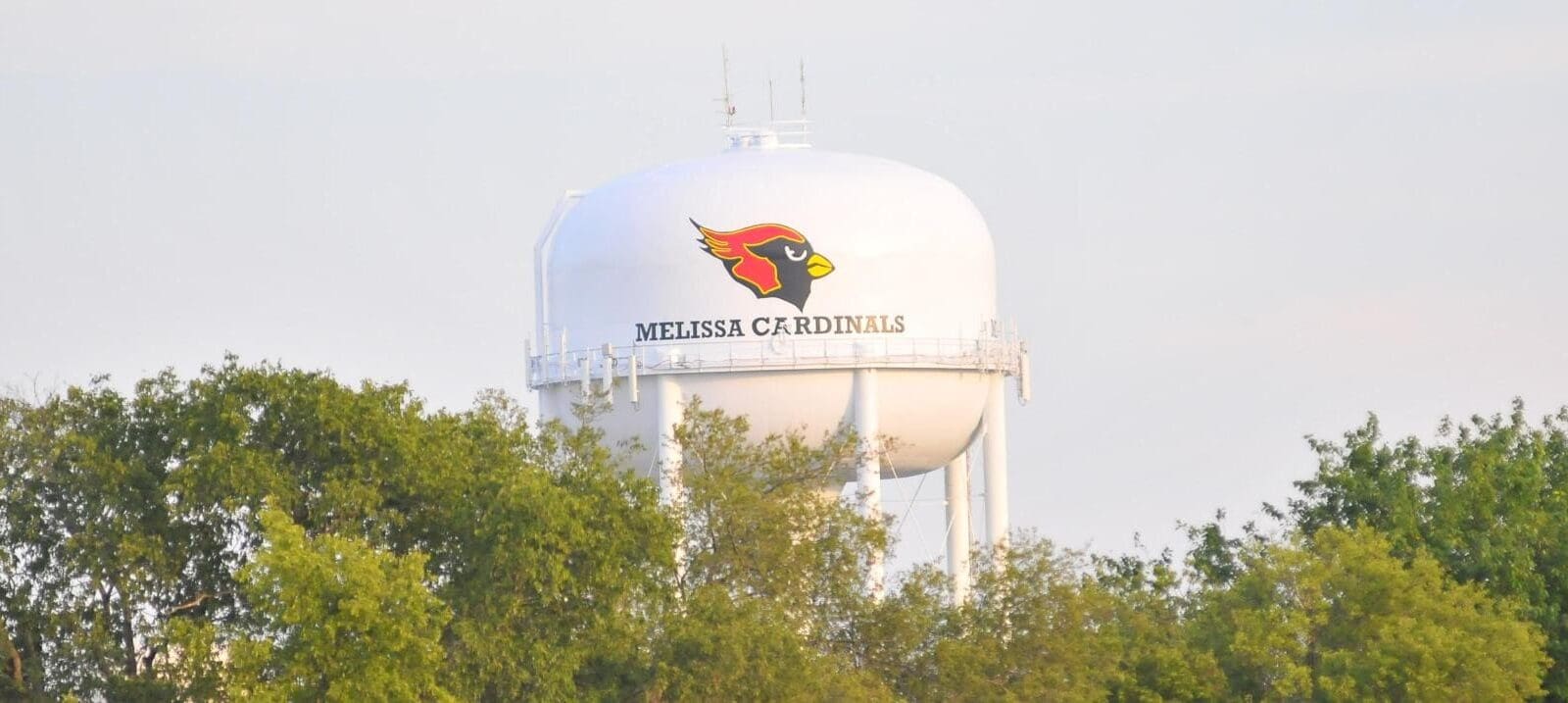Perhaps in recognition of recent electoral rebuffs by financially tapped out voters, Melissa ISD appears to be taking a quieter approach to its $1.2 billion bond campaign.
School districts have historically used a formulaic approach that incorporates aggressive PAC-funded marketing campaigns, district presentations, and basic peer pressure throughout the community. It appears the standard playbook may be changing, as aside from PAC-funded “Vote Yes!” signs posted around the district, Melissa ISD appears to be the sole source funding election information.
The district wants voters to approve two bond packages—one for $800 million, another for $75 million—which with interest (generally calculated at 40-50%) will total more than $1.2 billion.
The district’s bond website lists Proposition A for $800 million as including an early childhood center, three to five elementary schools, a middle school, a 9th grade center, facility additions and renovations, bus/transportation expansions, and land acquisition. The technology-focused Proposition B for $75 million includes upgraded network infrastructure, in-classroom technology, digital safety and security systems, as well as devices for students and staff.
In its “Melissa ISD is Growing” pitch, the district offers growth history and projections, positing that the student population has “more than doubled in the last five years” and is “set to increase by 67% in the next 10 years.” It also maintains that “growth will surpass facility capacity in the next 5 years.”
Passage of this bond will triple the district’s debt from $632 million to $1.8 billion. It will also raise the average Melissa ISD resident’s total local government debt (school, city, county, and community college) to $3.7 billion. Click here for more detailed analysis.
Melissa ISD is advertising that passage of the bond will have “no tax rate impact.” This isn’t the same as no new taxes. The district “plans” to keep its I&S rate the same, but of course, despite the best intentions, plans can change.
A recent mailer cites growth as how Melissa ISD can pay for a bond without increasing its tax rate. The piece states, “As our community grows rapidly, the taxes generated from new homes and business help to cover the costs.”
It also notes that “individual tax bills may go up due to increased appraisal values beyond the district’s control.” This preemptively addresses “appraisal creep,” a tactic in which higher tax revenues are generated by raising property valuations, thus shielding local entities from unpopular rate raising.
State-required ballot language stating “THIS IS A PROPERTY TAX INCREASE” appears to have the district concerned. This language was added as part of 2019 school finance reform legislation to ensure voters are better informed.
In 2023, Texas Scorecard reported that “the pass rate for school bond propositions dropped to an all-time low of 61 percent” seemingly after implementation of the reform legislation. And the trend appears to have continued in 2024.
In a district YouTube video, Deputy Superintendent Robert Rich addresses the “THIS IS A PROPERTY TAX INCREASE” ballot language, explaining that the propositions won’t raise taxes as the “taxes are spread out amongst all of us, so the same tax rate will generate more revenue, but no more for you as an individual family.”
Suggesting the ballot language is inaccurate or unapplicable is untrue. It’s a matter of semantics—or spin. As the district acquires new residents, indeed, the impact of the new debt will theoretically be spread over a larger taxpayer pool, but the increased property tax liability exists regardless of the number of taxpayers available to pay.
If this new swath of residents doesn’t materialize or is smaller than projected, the increased liability still stands and could well prompt the district’s “plans” to change, thus generating a tax increase for existing taxpayers.
Another point worth noting is how a news release announcing the bond election included the standard talking point that “For voters over 65 or disabled who have an approved homestead exemption, your tax rate will not change.”
This encourages age-65+ and disabled voters to vote for a tax increase for their family, friends, and neighbors—a tax increase to which they will not be subjected. If the Melissa ISD tax rate doesn’t change, then it’s a moot point, but promoting the burdening of others with new debt always seems a distasteful choice.
Both measures are likely to pass with healthy majorities. Healthy majorities, not healthy vote totals. May elections, by design, are low-turnout affairs. The benefit of high-dollar decisions being made by small numbers of voters isn’t lost on any local government.
As average voters appear increasingly hesitant to approve new local debt, a revised, “quiet” election strategy appears to be underway. School districts, often one of an area’s largest employers, typically work to ensure eligible district employees “understand” their need to vote.
That understanding will most likely quietly carry the day.
This is a commentary published with the author’s permission. If you wish to submit a commentary to Texas Scorecard, it must be no longer than 800 words. Send to: submission@texasscorecard.com





